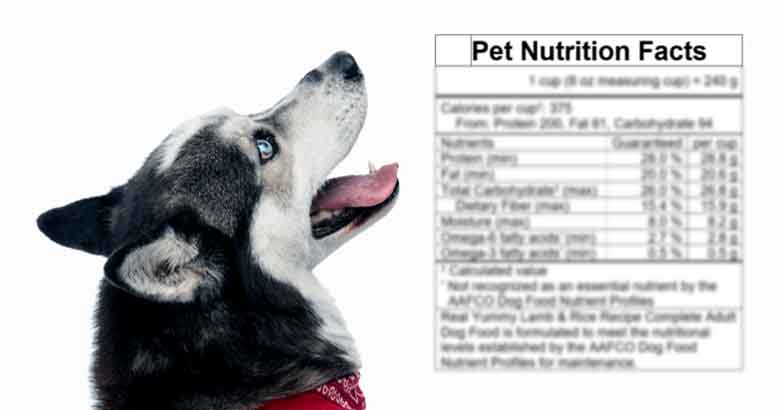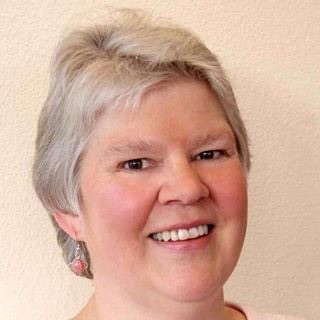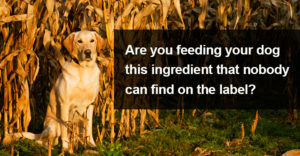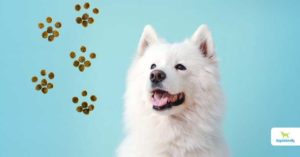The Association of American Feed Control Officials (AAFCO) is the group that sets the nutritional standards for US pet foods, and maintains the Pet Food Model Regulations. These have no legal authority themselves, but states can adopt part or all of those standards, which can then be legally enforced.
Part of those model regulations specify what information must be on pet food labels and how it shall be presented.
If you’ve looked at a pet food label in the last, oh, 40 years, you’ve noticed that this has not gone well. While human food labels received a massive update in 1994 with the implementation of the Nutrition Facts box, pet food labels are still virtually unintelligible, with vague ingredient names and terms meaningless to consumers … like “crude fiber.”
A few years ago, calorie information was added to the label requirements to aid consumers in managing their pets’ weight. However, it isn’t always easy to find – or interpret.
Pet Food Label Modernization
In 2011, the US Food Safety Modernization Act (FSMA) was passed. AAFCO began the Pet Food Label Modernization (PFLM) project in 2015. It aimed to update the Pet Food Model Regulations and make pet food labels more consistent and transparent by aligning more closely with the labeling on human food packaging. New provisions have been added and many regulations clarified.
The term “pet food” includes daily “complete” foods, veterinary diets, treats, snacks, broths, milks, mixers, toppers, chews, supplements, and all other products that provide nutritional value to a dog or cat. Pets such as hamsters, rabbits, or birds are considered “specialty pets.” Most of the new labeling requirements apply to both pet foods and specialty pet foods.
A complete food for any species is a food that, by itself, provides 100% of the daily nutritional needs of that animal. For cats and dogs, that means meeting the AAFCO Nutrient Profiles for the various life stages. For specialty pet food, the only accepted standard is the recommendations of the National Research Council (NRC). The NRC has published guidelines for laboratory animals, many of which are also kept as pets: rabbits, mice, rats, gerbils, and guinea pigs. No nutritional standards exist for many specialty pets.
A great deal of consumer research was conducted to understand how pet food labels can better communicate important information. State regulators, veterinarians and representatives of consumer groups have been helping in the process. The pet food industry, of course, has also been heavily involved.
Major Label Changes
There are four main items on the pet food label that will be different.
1. Nutrition Facts Box
This new feature will replace the current Guaranteed Analysis and Calorie Statement. Instead of lines of text, the Nutrition Facts Box will look much like the box on packaged human food.

- The caloric distribution of protein, fat and carbohydrate will be displayed. Calories will now be stated as a percentage of the food instead of kcal/kg (kilocalories per kilogram of food), as well as per common household measurement (like tablespoon or cup) or per unit (e.g., one treat or chew). FYI, for measurements in grams, there are about 30 grams in one ounce. Calorie information is not required for specialty pet food.
- Crude Fiber from the Guaranteed Analysis is replaced by separate measurements for fiber and carbohydrates. (Fiber is a carbohydrate that the body cannot digest.) The other nutrient guarantees (protein, fat, and moisture) will also be listed in the box.
- A statement of nutritional adequacy is included at the bottom that specifies that the food either meets one of the AAFCO Nutrient Profiles (nutritional standards) for dogs or cats, or that it is for intermittent or supplemental feeding.
The Nutrition Facts Box will make it much easier for consumers to do side-by-side comparisons of various foods – even standing in the pet store aisle – so they can make the best choices for their pet.
2. Intended Use Statement
Previously, the intended use or purpose of a pet food – that is, the species and life stage(s) for which the product is designed – was required on the principal display panel (PDP), the main front label. Now there will be a specific statement of intended use appearing on the lower third of the PDP, such as “100% complete food for adult dogs.” This designation would include adult dogs of any weight. Foods for large and giant breeds whose adult weight exceeds 70 lbs have maximum limits for calcium and phosphorus.
3. Ingredient Statement
The ingredient list on a pet food package is where much of the consumer confusion originates. The new labels won’t help a whole lot with this. While a few ingredient definitions will be updated, most of the changes involve the use of parentheses, italics, and common or usual names.
4. Handling and Storage
A new, optional label item will be handling and storage instructions. If used, the package may utilize one of several icons to make the recommendations perfectly clear. These are somewhat of a nod to the popularity of raw diets, though most can apply to other food forms as well.

When Will We See These Changes?
The new model regulations will be published in the 2024 AAFCO Official Publication. As mentioned above, AAFCO has no regulatory authority; so at this point these changes are only guidelines. However, it won’t be long before states legislatures start adopting them.
Not all have adopted or ever will adopt all the AAFCO Model Regulations, but companies that ship across state lines will be quick to make these changes.
AAFCO is working to develop an implementation schedule and plan to support these new regulations as each state adopts them. Clearly, this is a big deal. There will be a six-year phase-in period for manufacturers to comply with the new labeling requirements, during which state regulators are encouraged to practice “enforcement discretion.” That is, state feed control officials will not take action against companies using old labels during the phase-in period. This schedule will be re-evaluated annually to consider issues or challenges that may arise and require more time to resolve.
Author’s Note
All of us involved in AAFCO (I’m a volunteer “industry advisor” representing a consumer advocacy organization) have worked very hard on the new label requirements, meeting by video conference sometimes two or three hours in a week over the last year. Training sessions for retail store and distributor employees who directly educate consumers) and veterinary organizations are in the works. Learning resources will include videos, presentations, PDFs, and web pages. We believe that consumers will find the new labels much easier to read and understand!
It is AAFCO’s goal to provide highly visible, standardized nutritional information, clearer ingredient lists, and more precise feeding directions to help consumers make better decisions about their pets’ nutrition. More than 50% of dogs and 60% of cats are overweight or obese, not to mention plagued by chronic nutrition-related health disorders. Opaque pet food labels are not the only factor, but they are a significant one. Since people are already familiar with the Nutrition Facts Box, these may be more likely to get attention and influence buying decisions. The new labels are indeed a big improvement, but will they be enough?













